1946 Jefferson nickel Transitional Mint Error??
I'm not a collector and am just fumbling around this coin space trying to figure things out. I have a 1946 Jefferson nickel which MIGHT be a transitional wrong planchet error by the Philadelphia mint. It sat in my Dad's jewelry box since the early 1950s and in mine since his passing. The only attribute that is readily available for me to test that leads me to suspect that it is of the wartime composition is the fact that it has no attraction whatsoever to a strong magnet. Grok Ai seems to think that the normal post war metal alloy for this coin containing nickel should have about 1/4 of the attraction of pure nickel. I'll post photos including one where I stacked neodymium magnets into a stack 118 mm by 15 mm and left a gap of 1 to 2 mm to the coin and there is no attraction. I'm probably going to submit it to PCGS for their opinion and confirmation testing.
Any comments are appreciated...
Don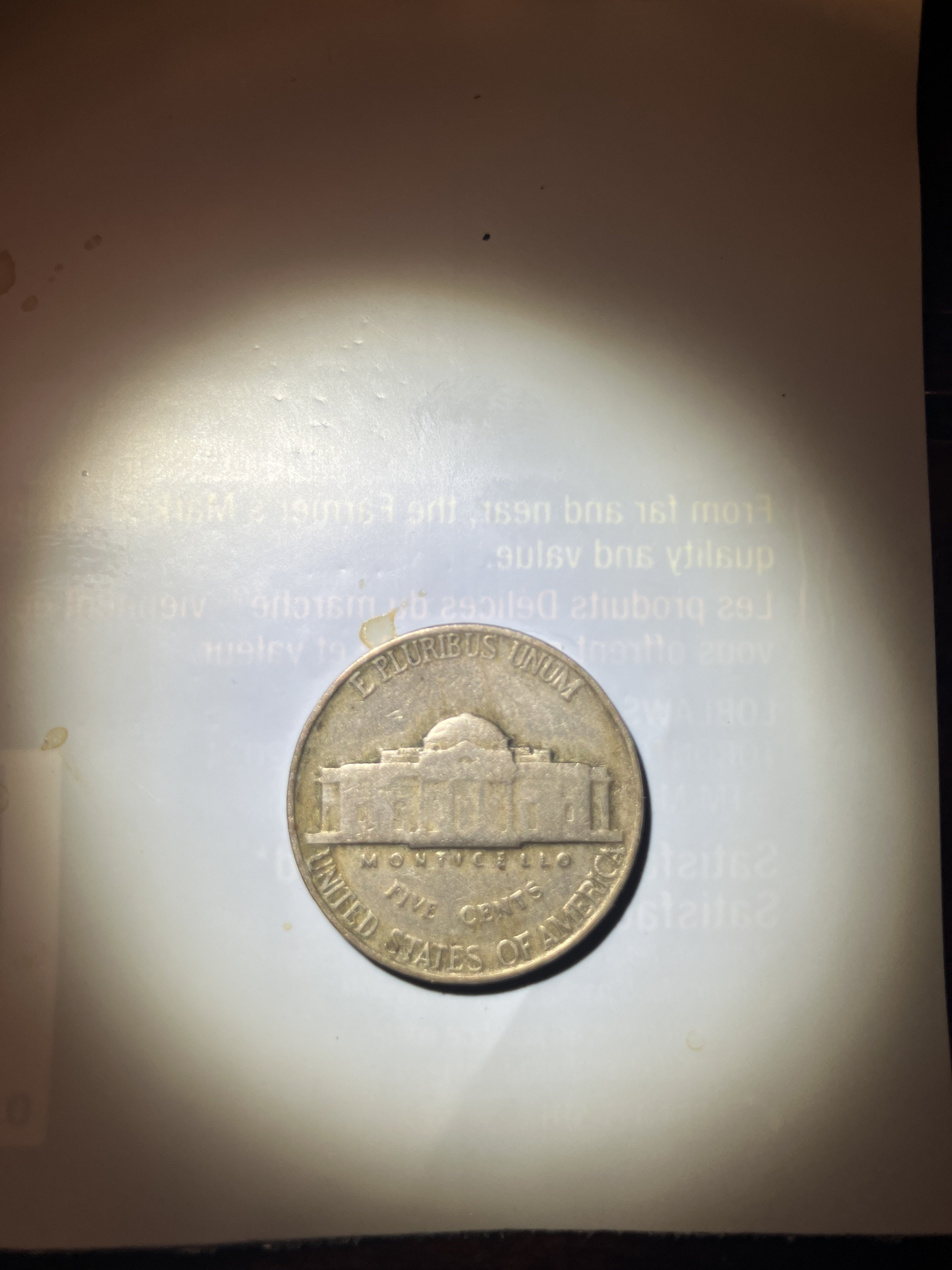
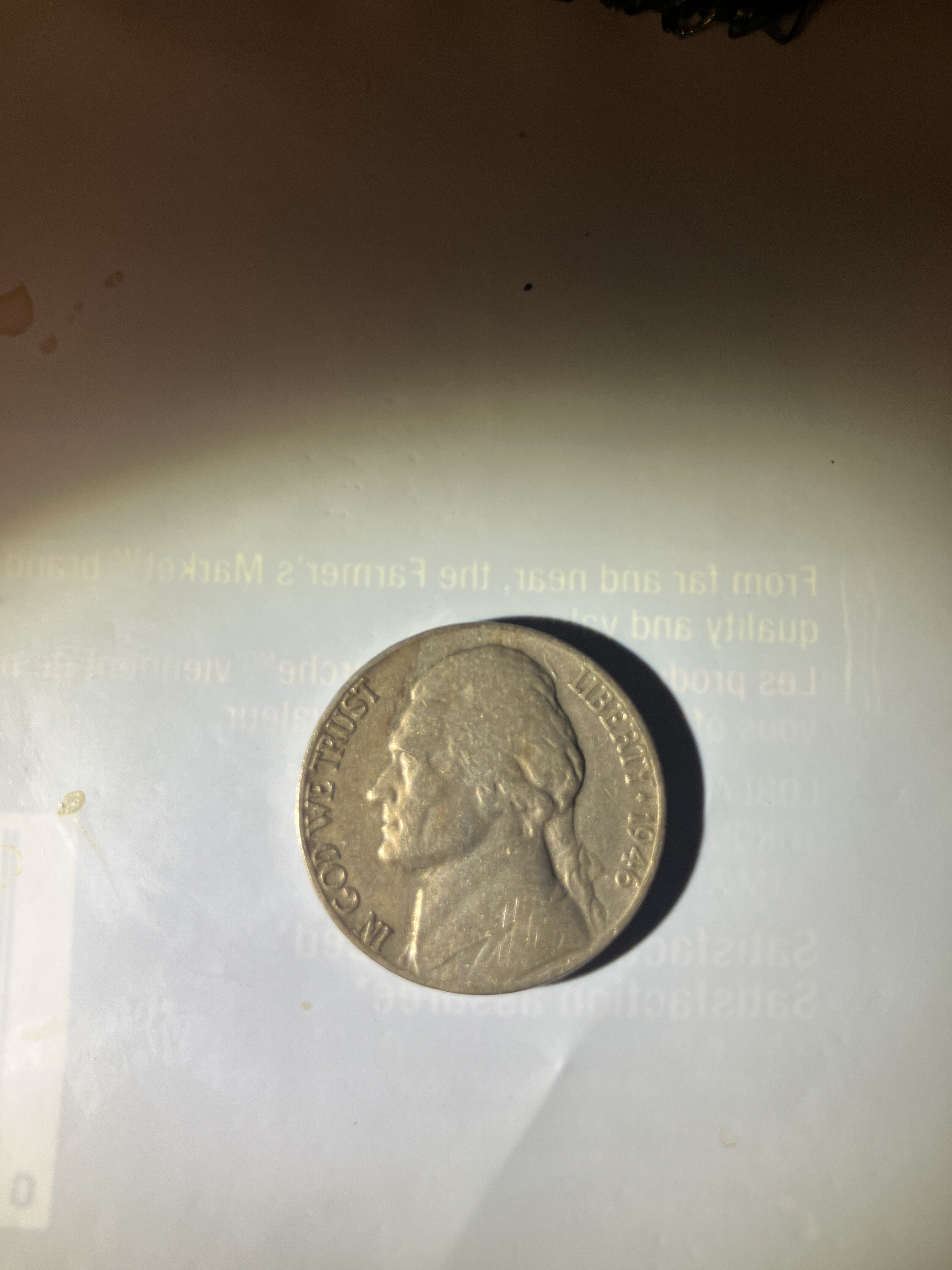
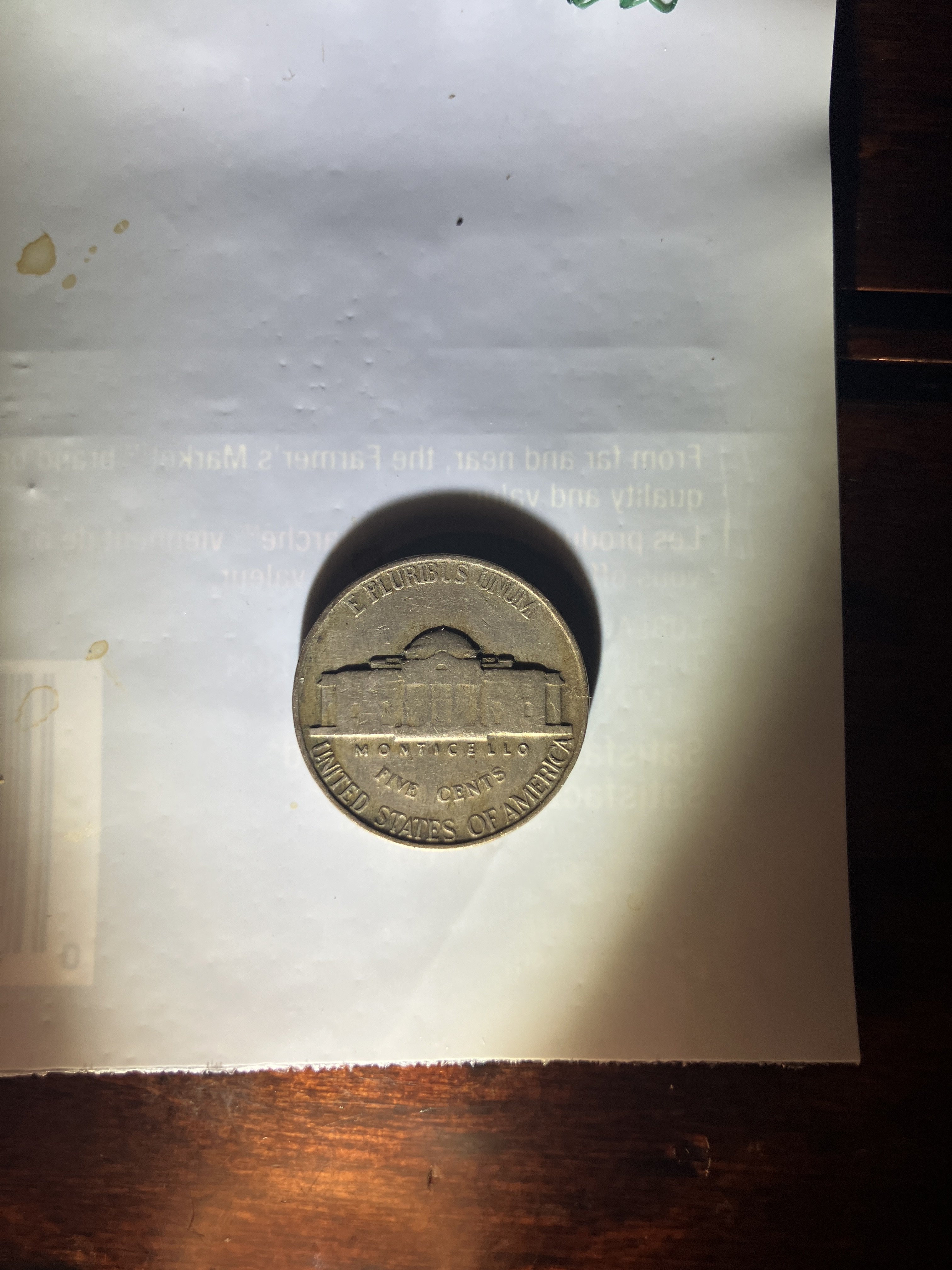
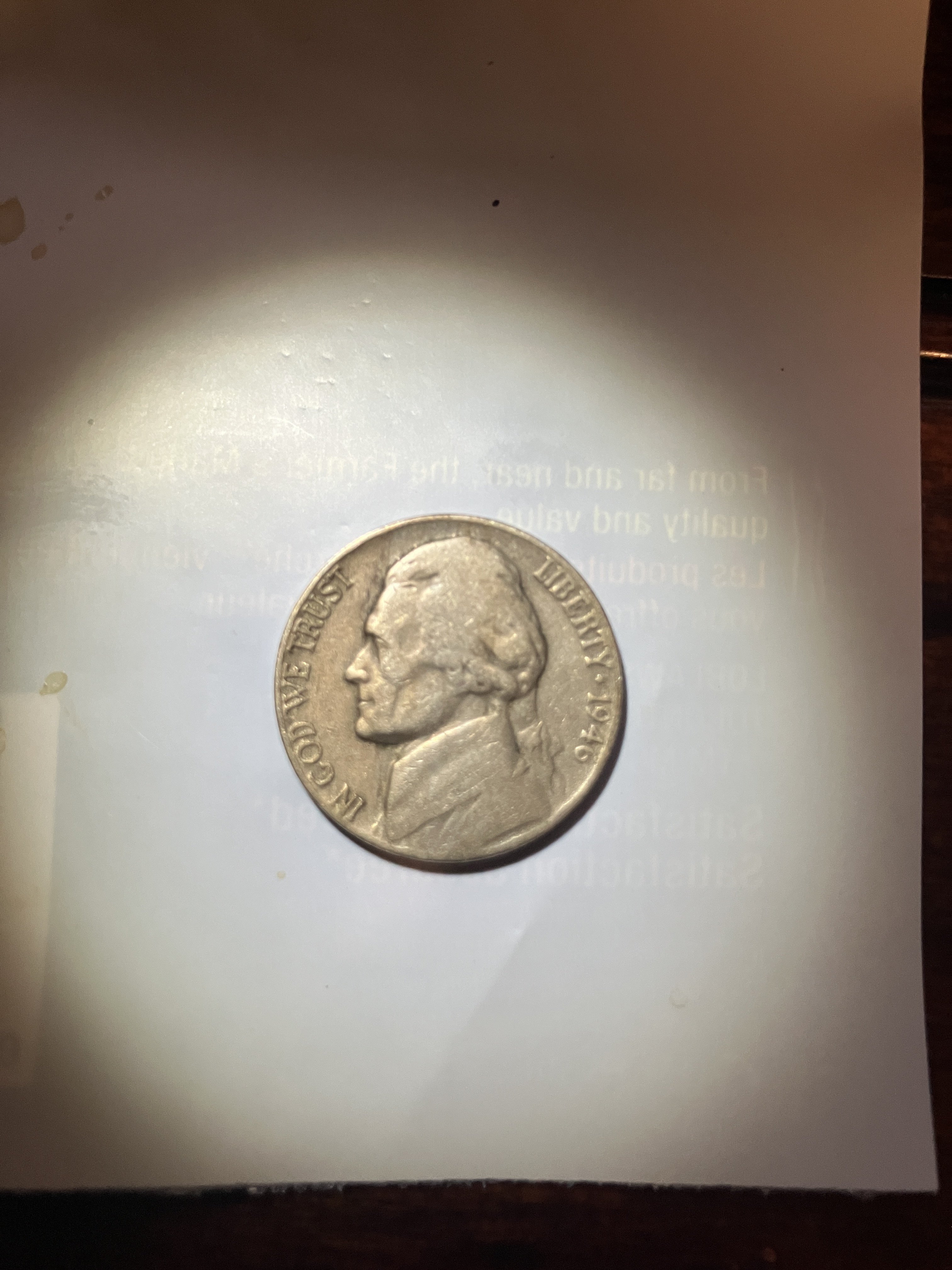
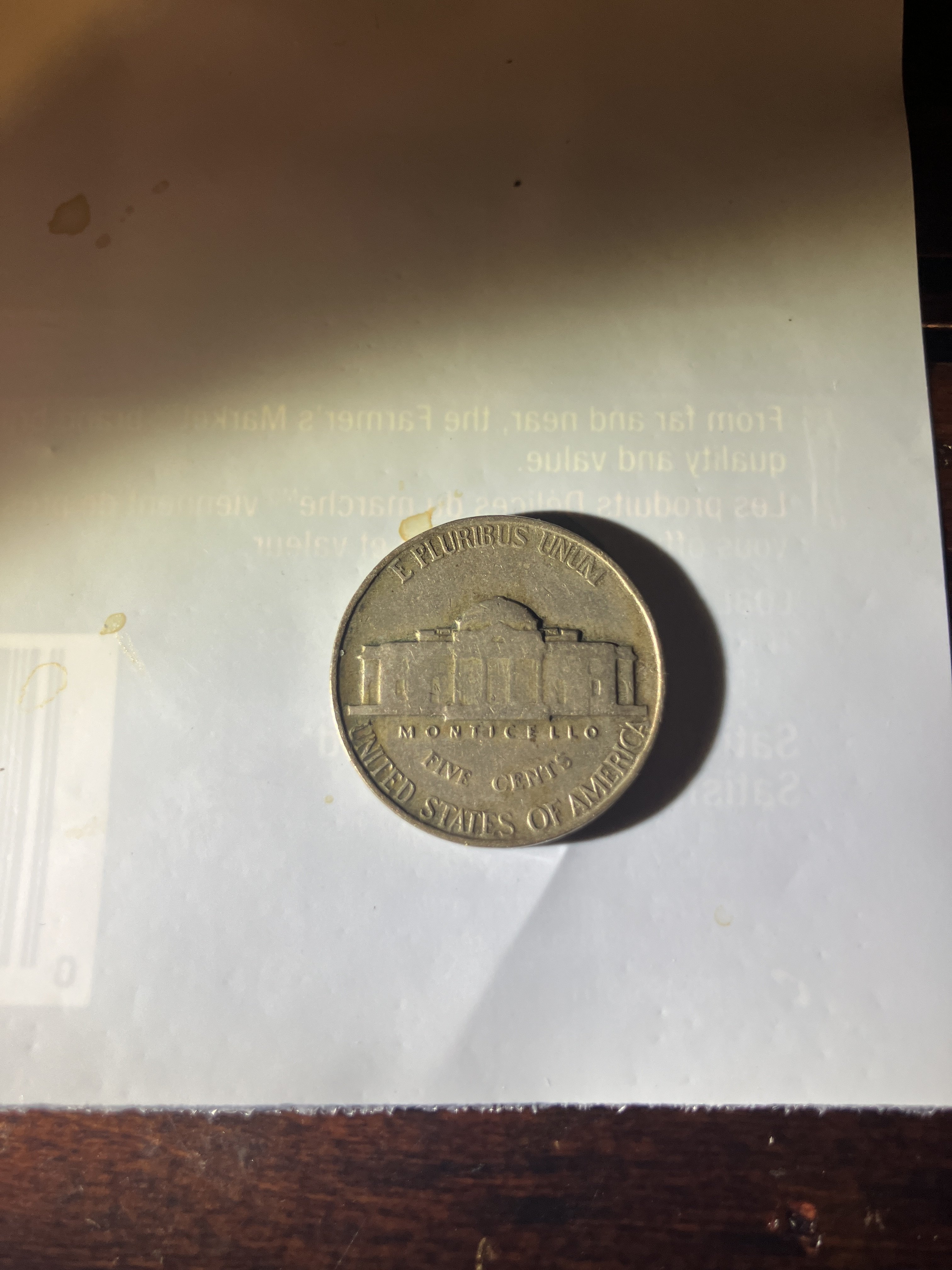
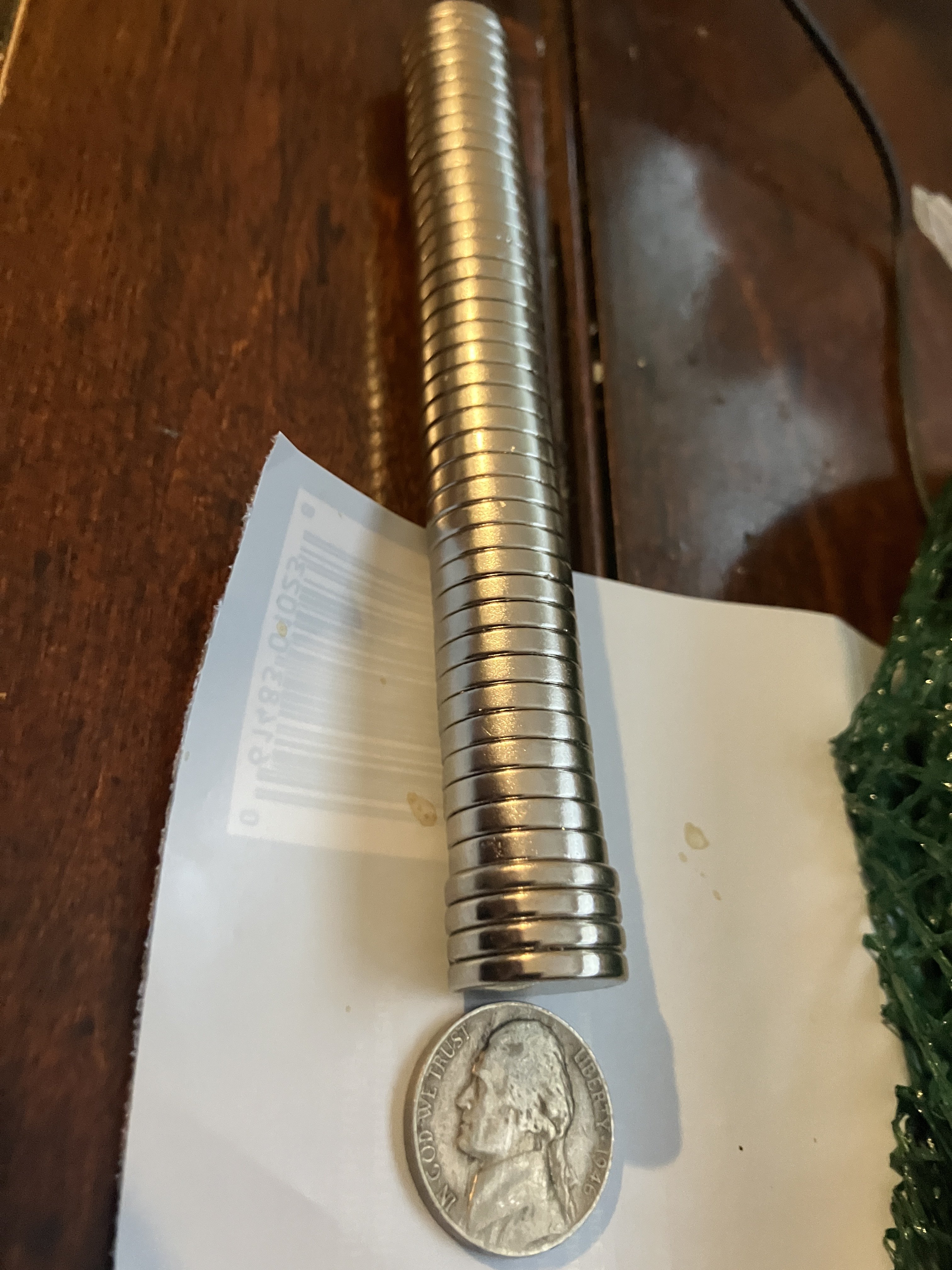
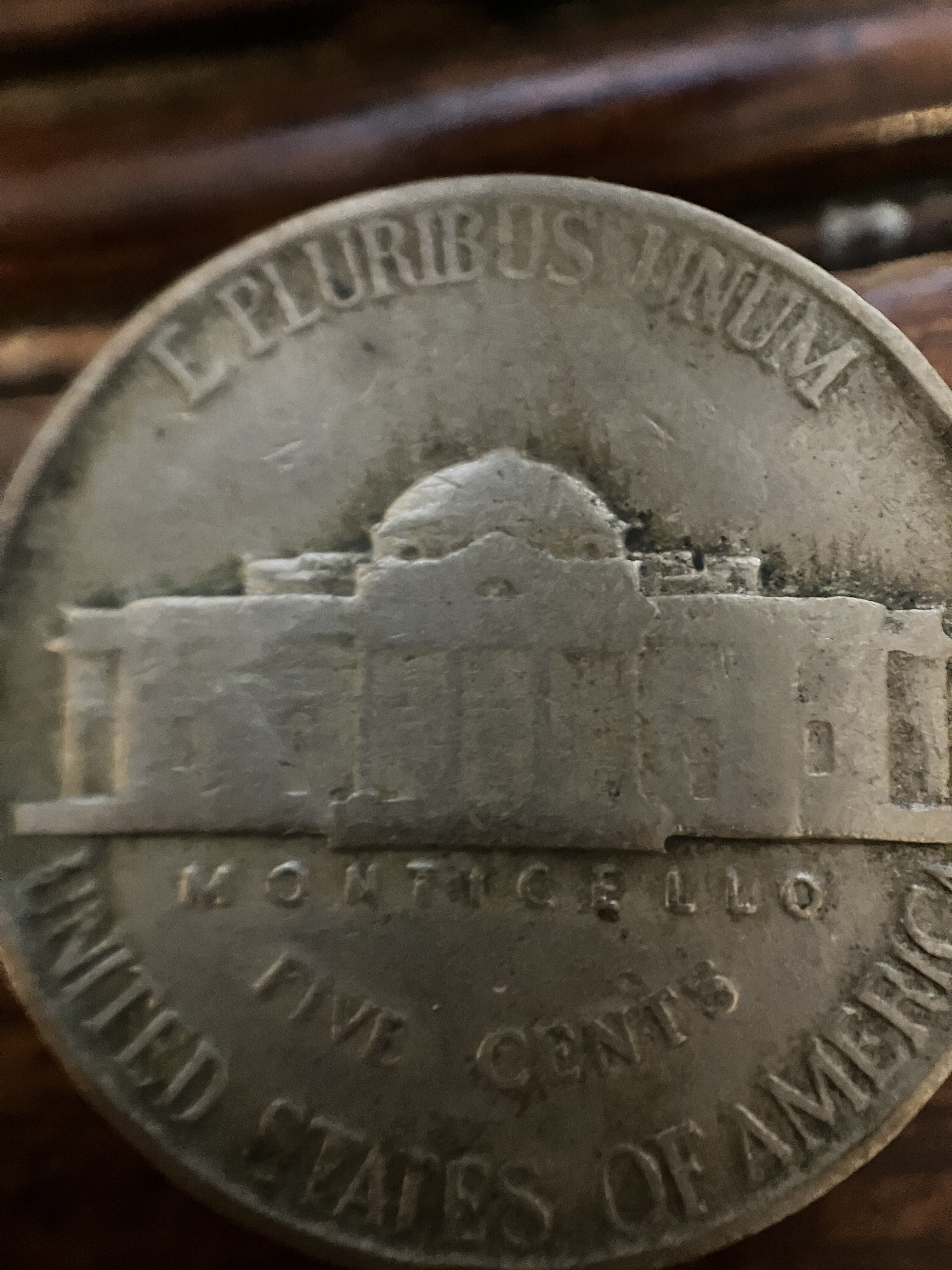
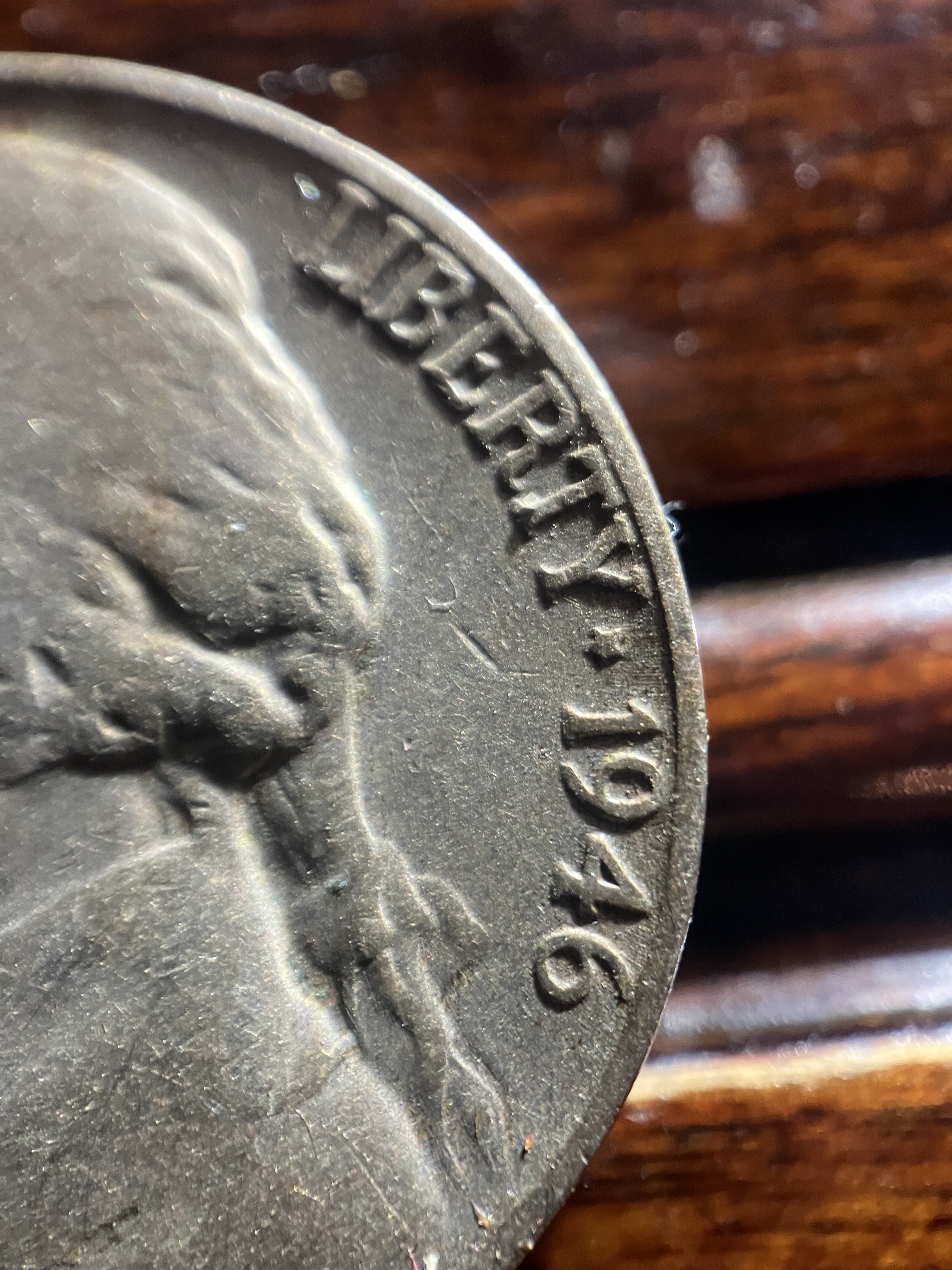
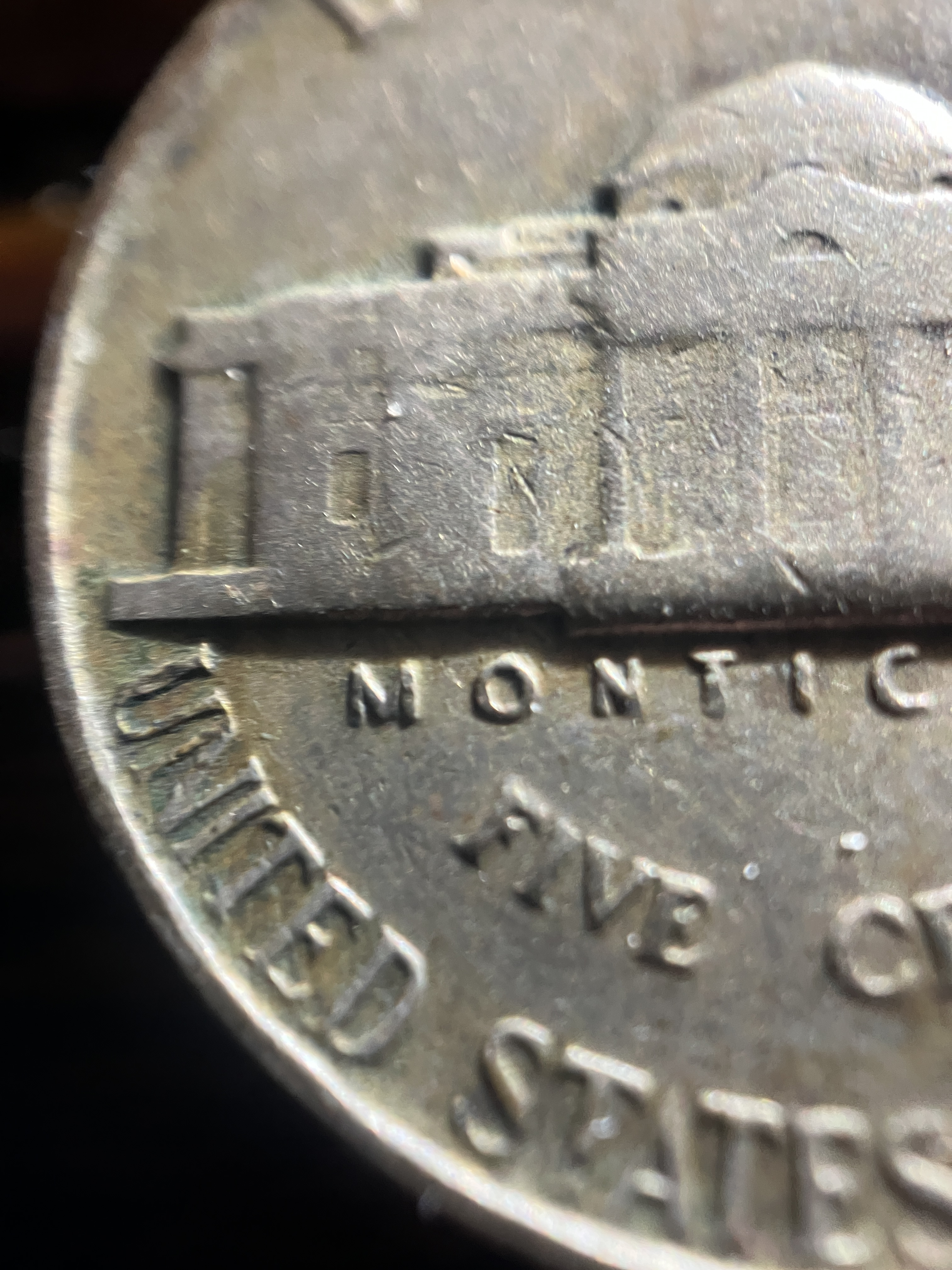
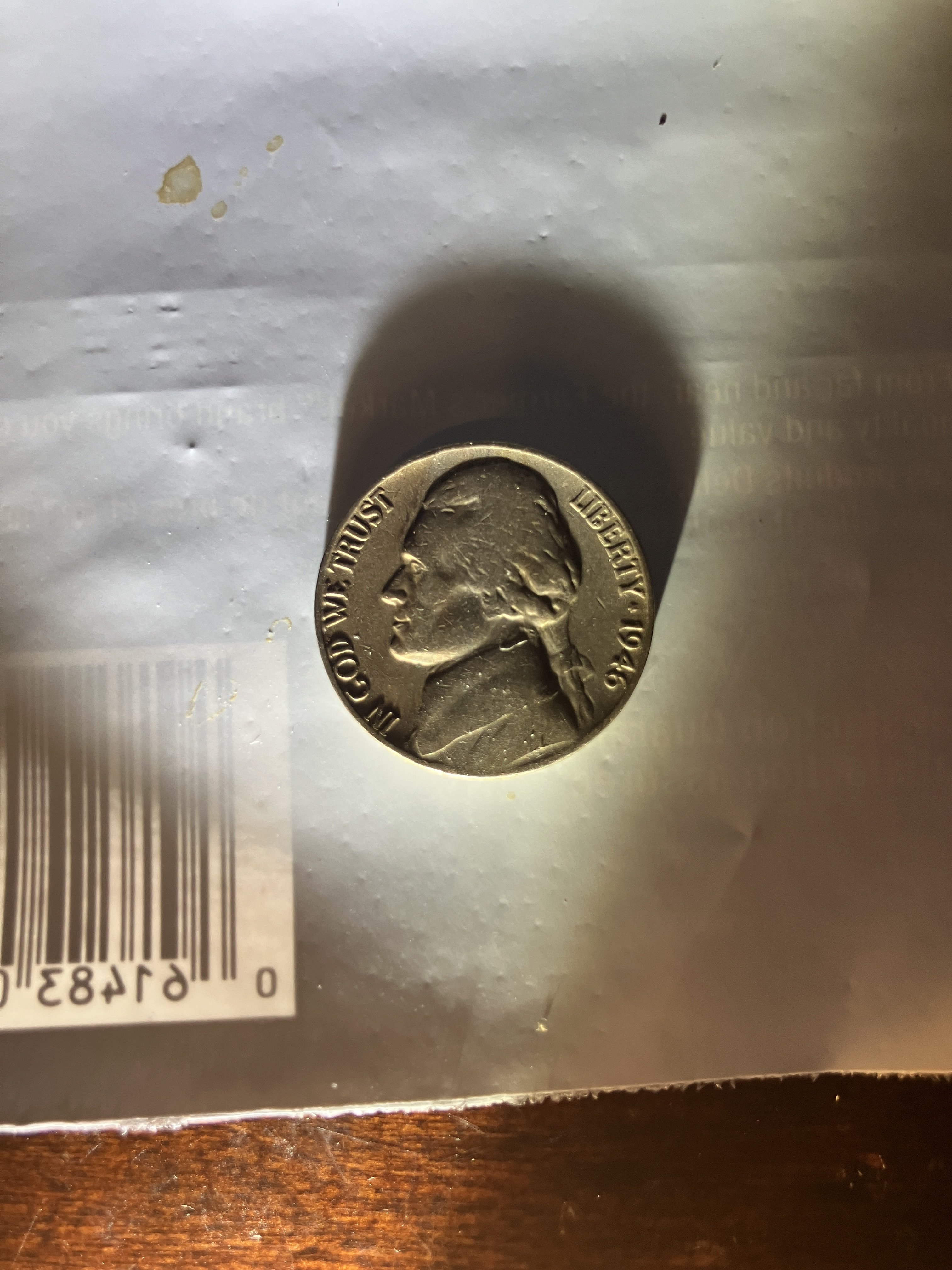
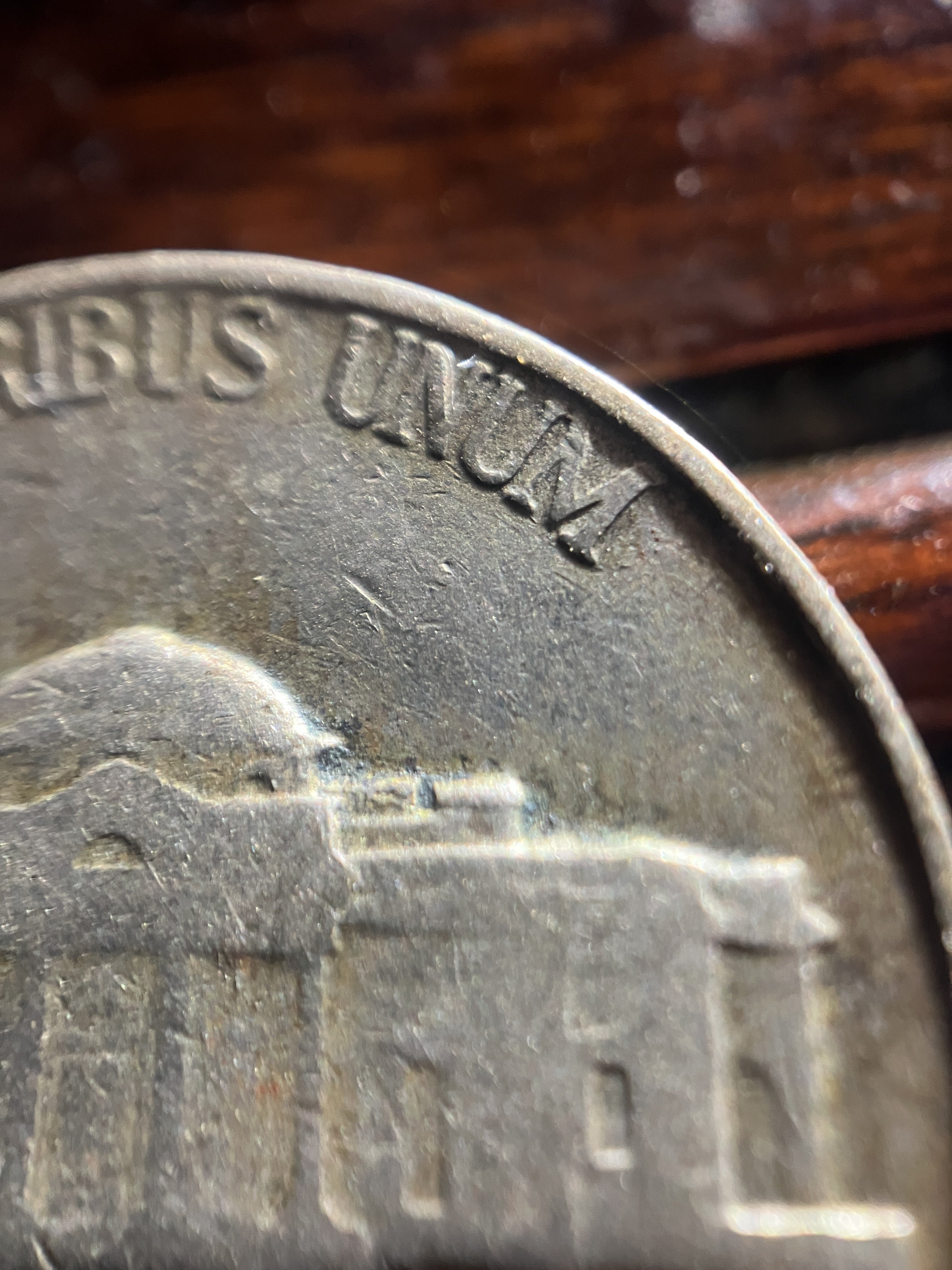
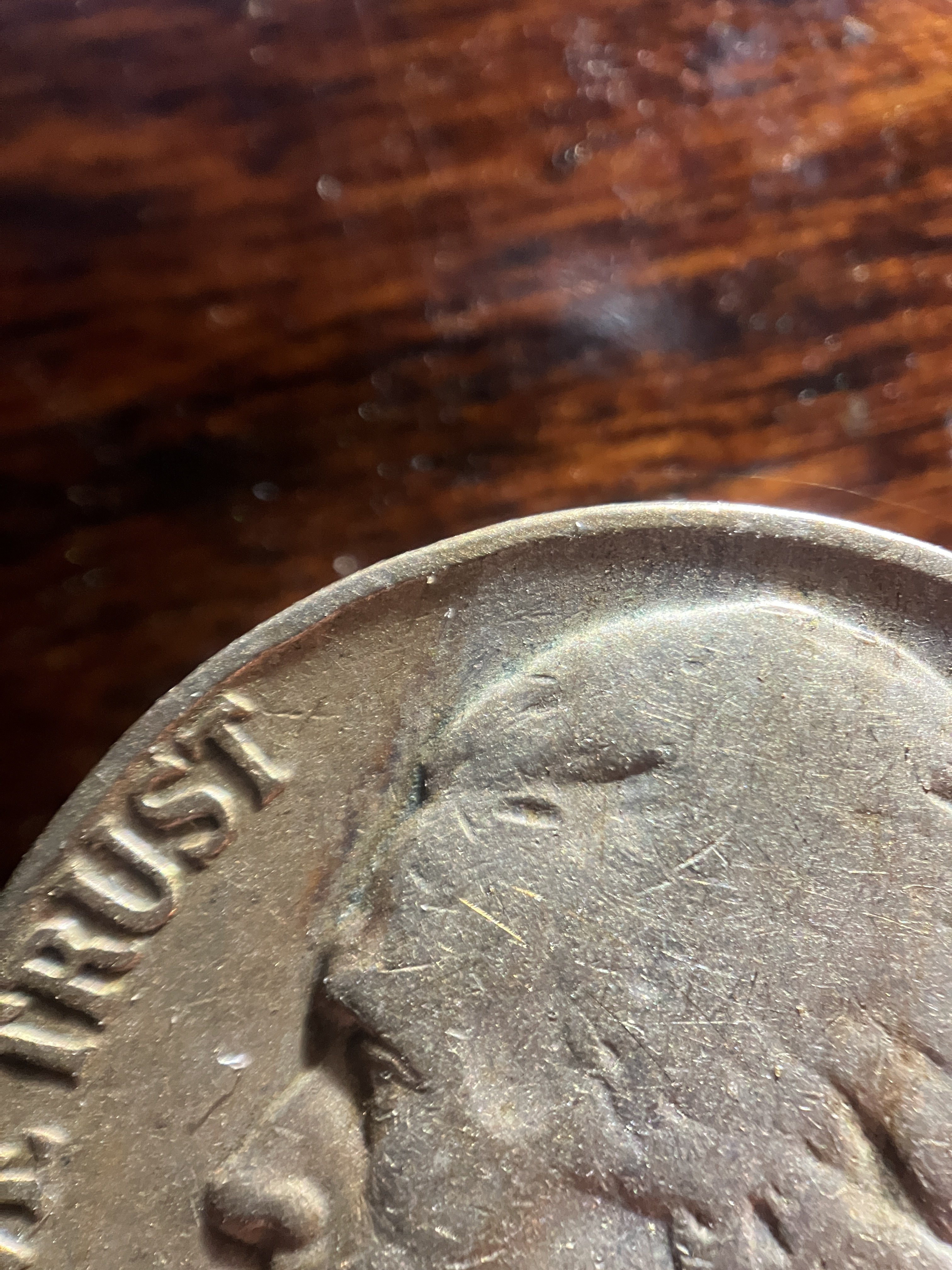
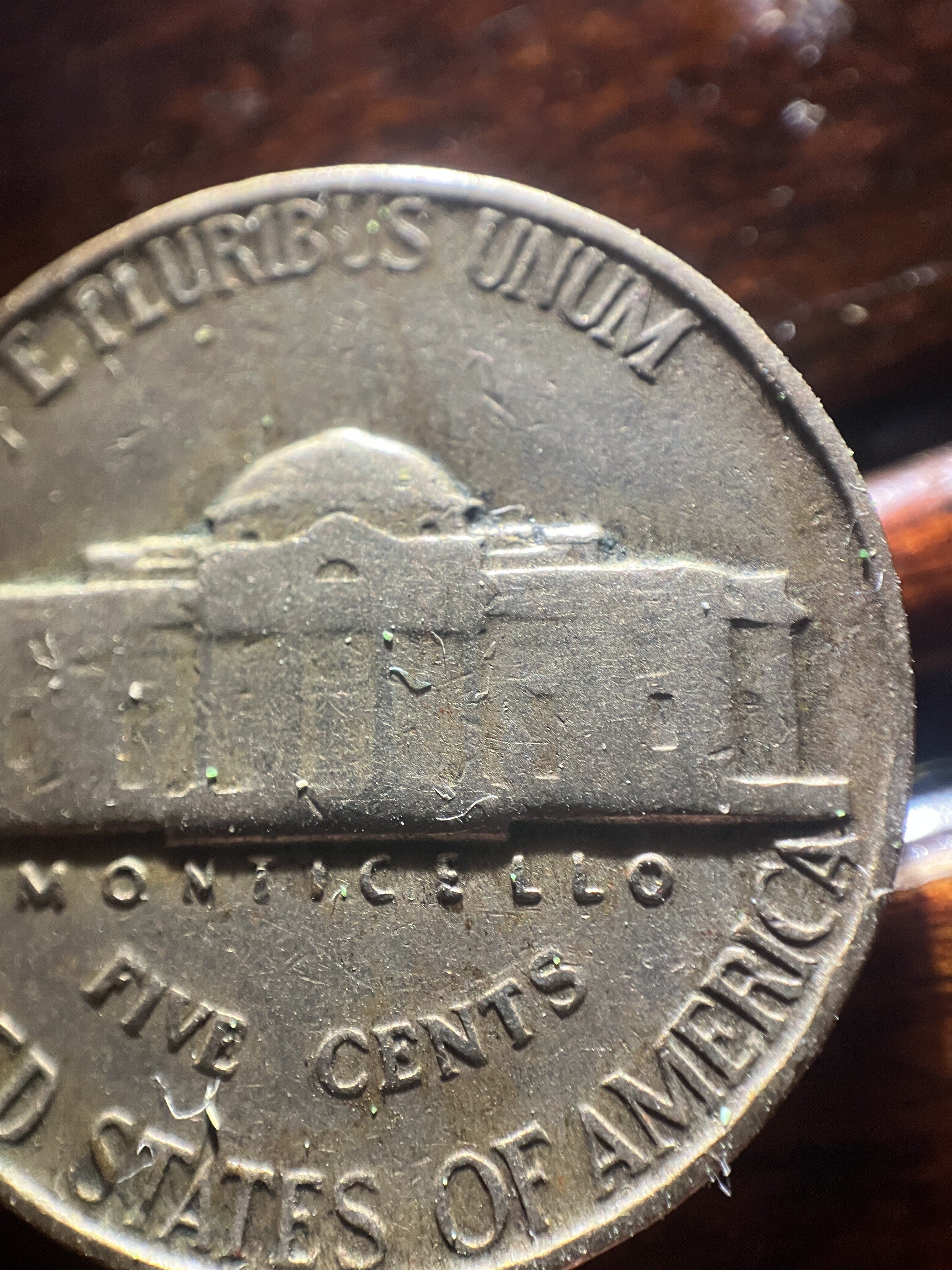
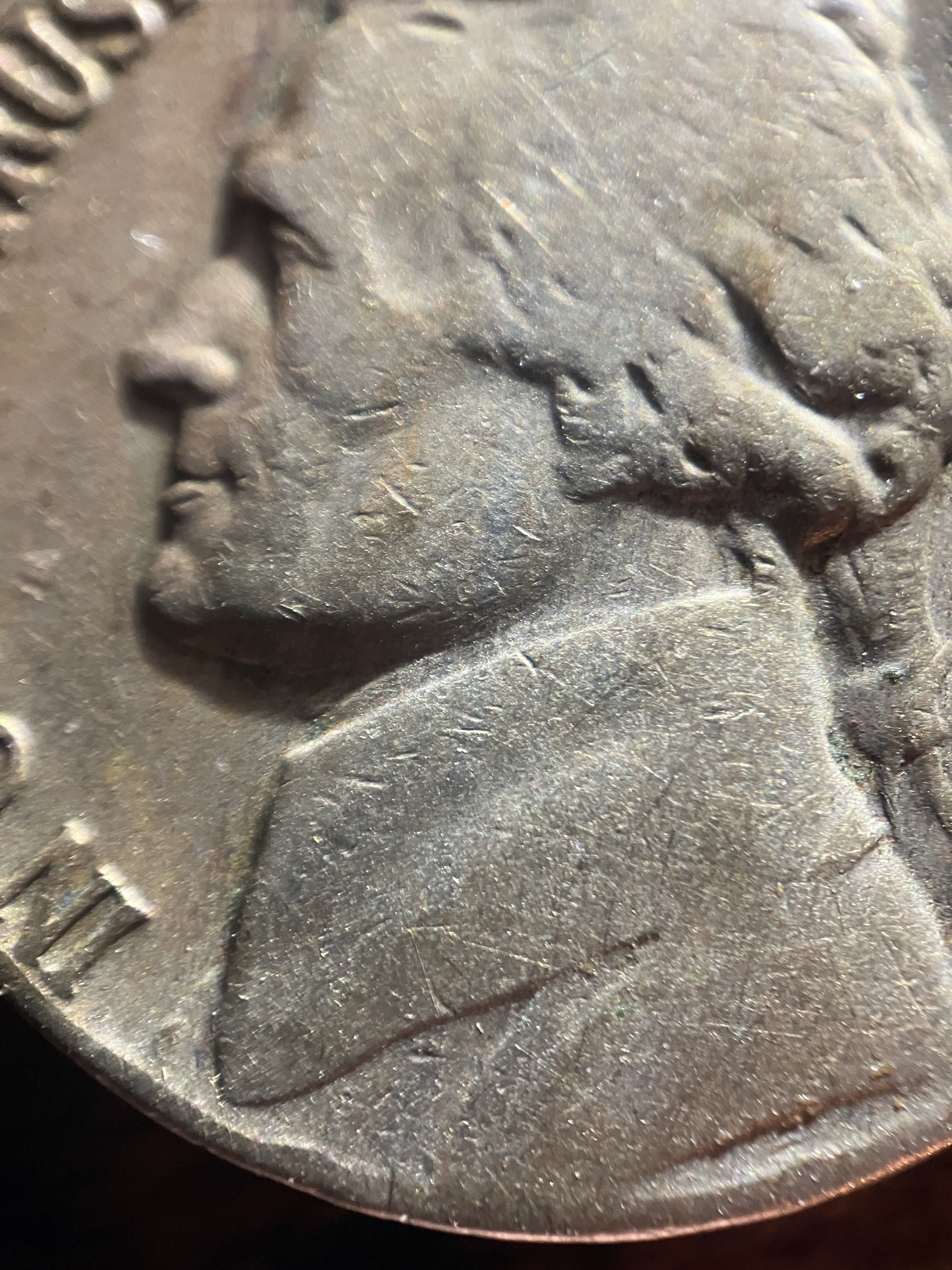
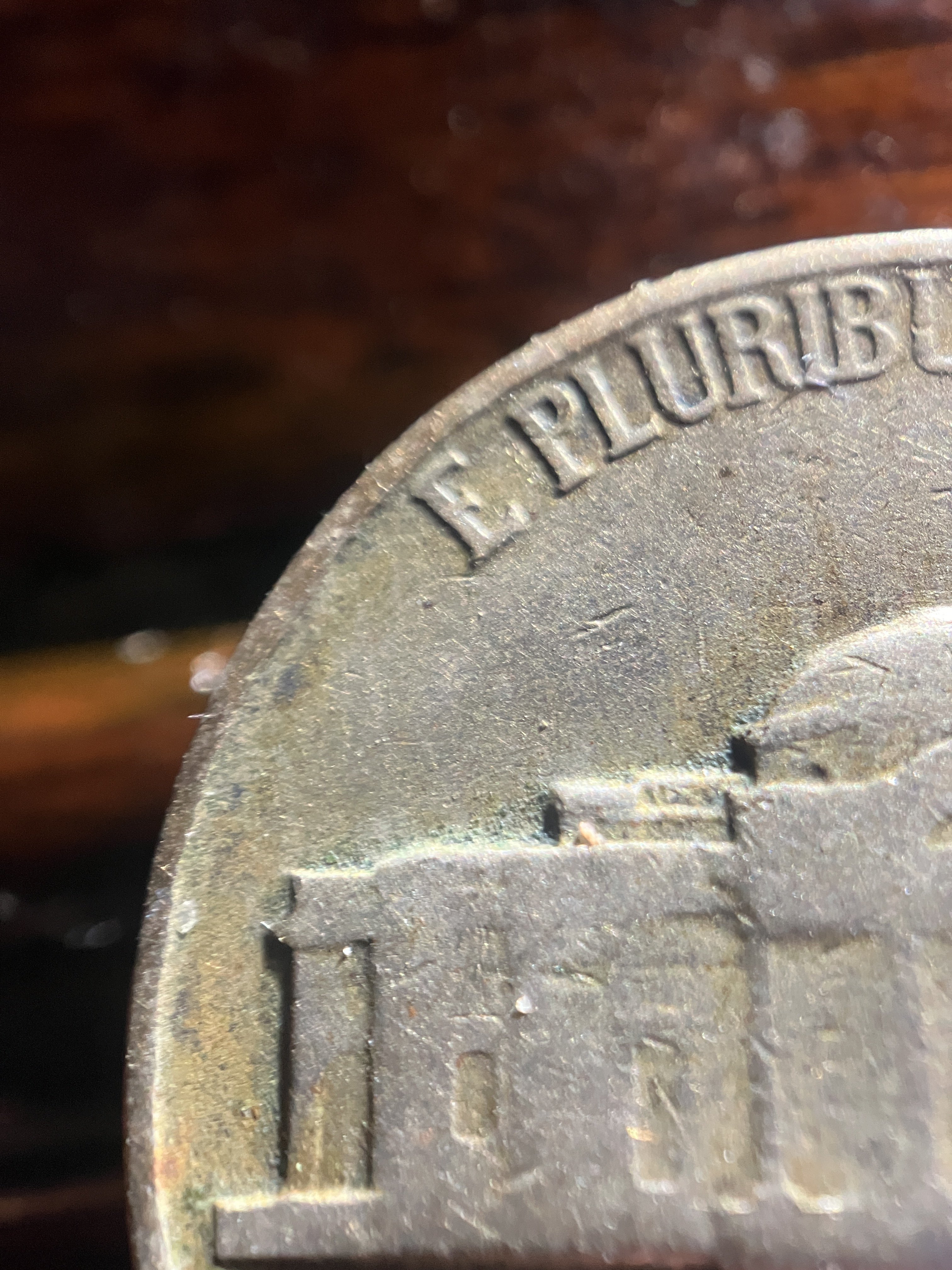
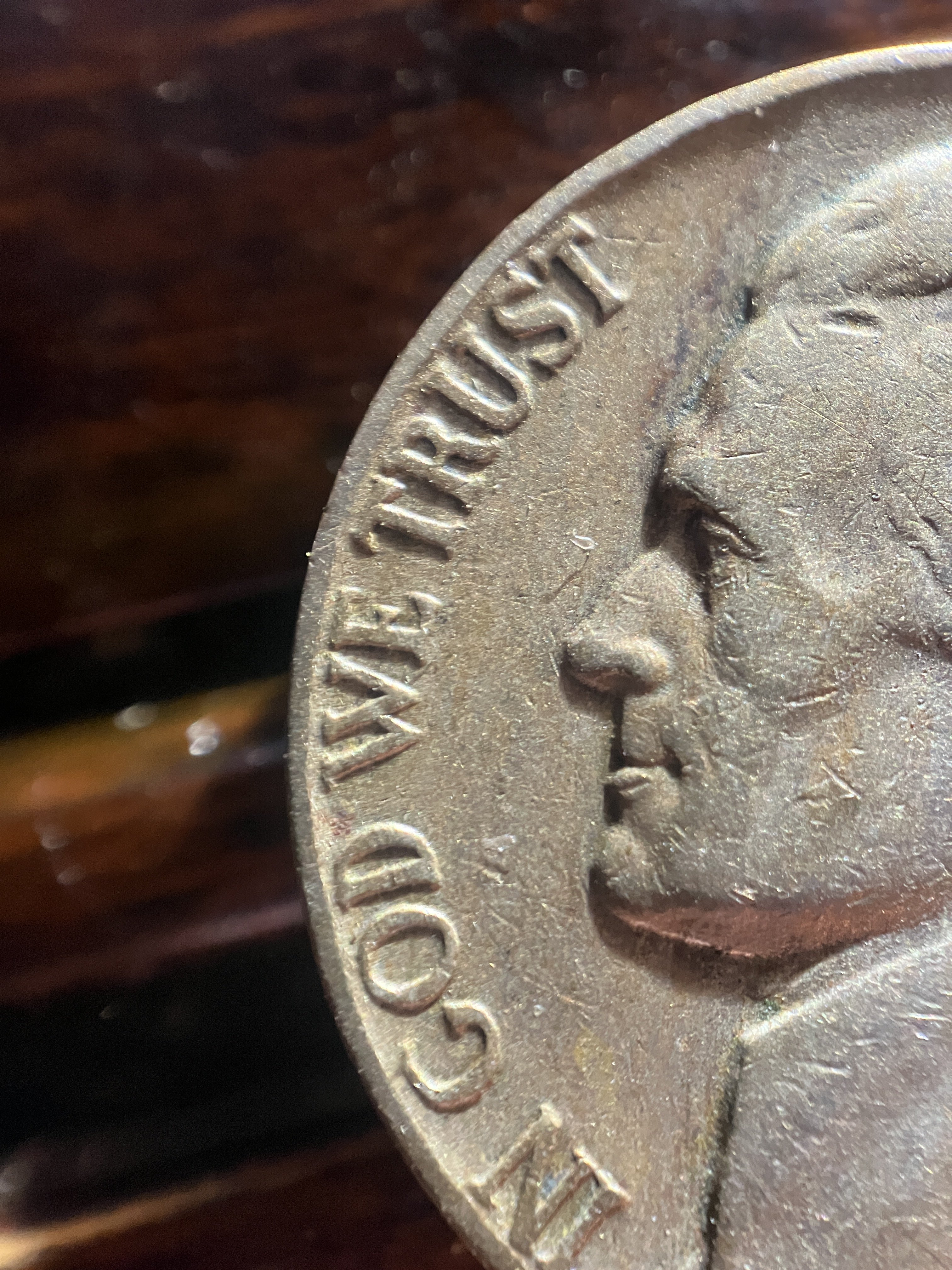
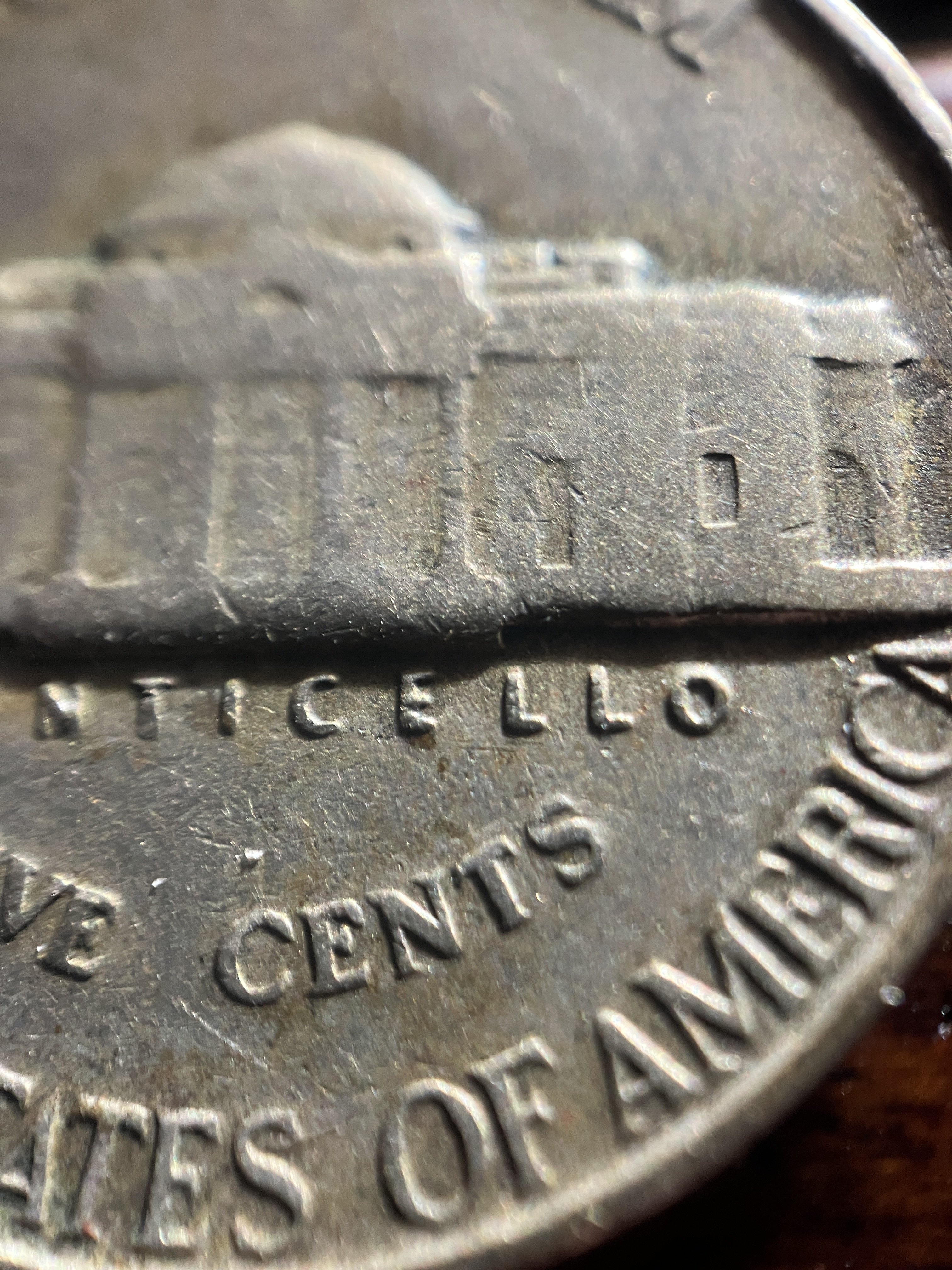
Comments
No. A regular 1946 nickel is not made of pure nickel (it is 75% copper and 25% nickel), so it will not be attracted to a magnet.
That would be ridiculous and a waste of money.
Whatever you do -- DO NOT send it to PCGS now. First figure out what it is or you will spend a lot for no reason. The only "transitional error" that would be possible would be a 35% silver planchet left over from 1945. The weight and size are the same so you would need an XRF or other test for silver content. Nothing in the photos suggests any other possible planchet error.
War nickels and regular nickels both weigh 5 grams.
The info you have is wrong- way off
US nickels are not magnetic.
Besides that your coin does not look like a silver or nickel planchet, in any case.
Save your money -it is not worth what you will spend to submit it to PCGS.
I'm not a collector and am just fumbling around this coin space trying to figure things out. I have a 1946 Jefferson nickel which MIGHT be a transitional wrong planchet error by the Philadelphia mint.
No. A regular 1946 nickel is not made of pure nickel (it is 75% copper and 25% nickel), so it will not be attracted to a magnet.
I'm probably going to submit it to PCGS for their opinion and confirmation testing.
That would be ridiculous and a waste of money.
Ok, thanks for that. So you're saying a wartime nickel with the silver, copper and manganese alloy is not attracted to a magnet at all? If so, you are right and it's not worth the expense.
Neither regular nickels or war nickels are magnetic, so you cannot use a magnet as a tool to identify either one.
Your 1946 nickel is just a regular nickel and is not worth any further investigation or discussion.
Whatever you do -- DO NOT send it to PCGS now. First figure out what it is or you will spend a lot for no reason. The only "transitional error" that would be possible would be a 35% silver planchet left over from 1945. So exactly how much does it weigh? Use a scale with two digits to the right of the decimal in ounces or grams for accuracy. Nothing in the photos suggests any other possible planchet error.
Thanks for the comment. I should have mentioned the weight in previous post. The only scale I have only has one digit for fraction of a gram. It shows 5.0 Maybe I'll try a local jeweler and see if they have something more accurate.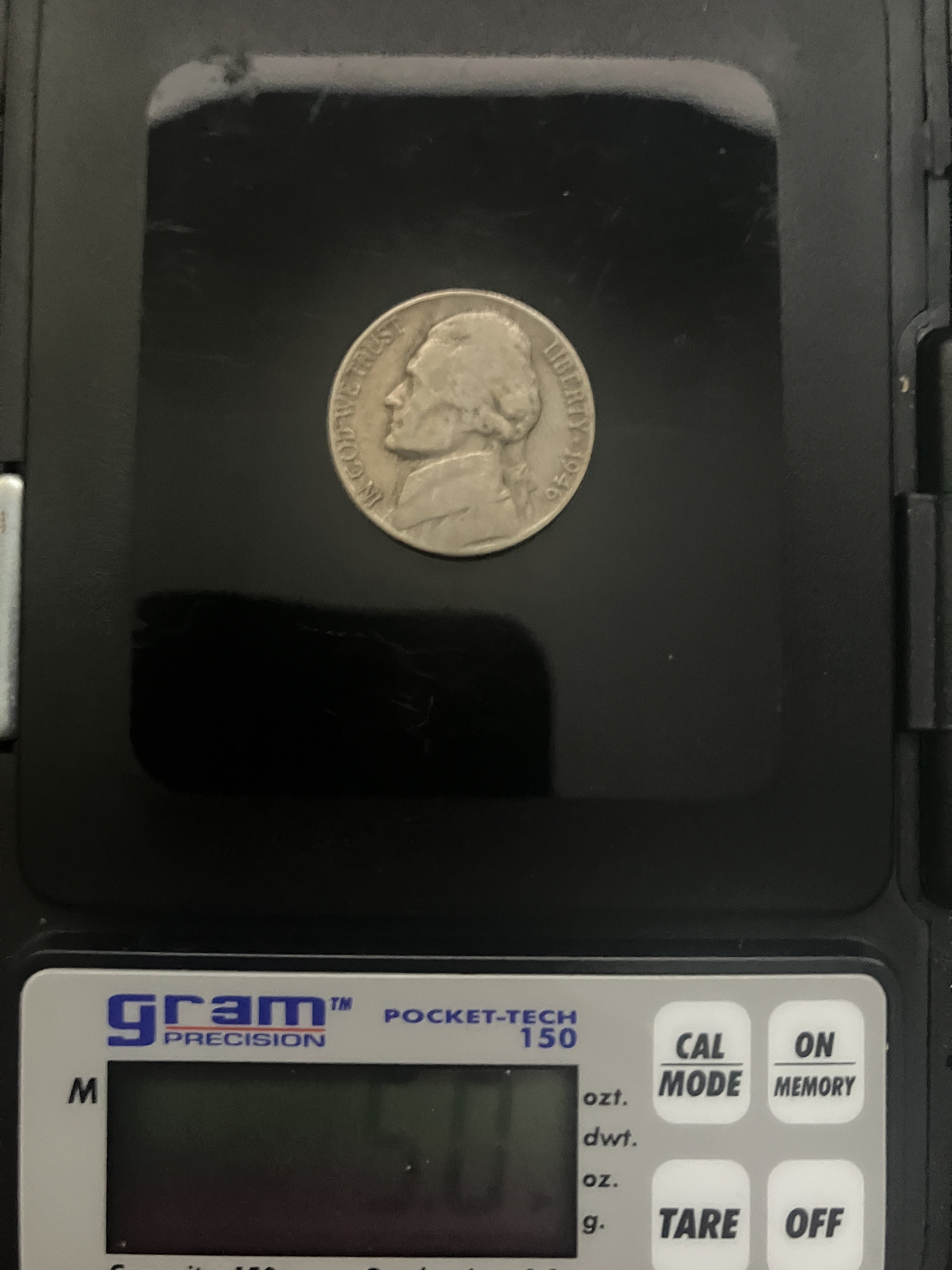
Are you even reading all of the comments? Both regular nickels and war nickels weigh 5 grams, so you cannot use a scale to distinguish them.
People are being polite, but understand that this is a major fail on your part. Stop what you are doing and forget about the 1946 nickel.
@Donupnorth said:
Ok, thanks for that. So you're saying a wartime nickel with the silver, copper and manganese alloy is not attracted to a magnet at all? If so, you are right and it's not worth the expense.
Neither regular nickels or war nickels are magnetic, so you cannot use a magnet as a tool to identify either one.
Your 1946 nickel is just a regular nickel and is not worth any further investigation or discussion.
Thanks IkesT
Looks like I was misinformed by Grok who's comment about it being magnetically attracted misled me.
Which is why I fumbled my way here to consult with those who know the real score.
Ai is not always right.
Thanks to all who commented.
I'll just throw it back in the jewelry box now.
Don
You are welcome.
Correct; I recommend not using AI for your coin research.
Well, at least Grok is willing to admit it was wrong :-)
The opinions were unanimous but I won't torment Grok about its choice of words
The color of your coin is the quick indication to me that it is not silver. Circulated war nickels have a distinct color and yours does not have it.
It doesn’t have the color of a silver war nickel.
My very first thought before reading anything was.................Henning.
Disclaimer: I'm not a dealer, trader, grader, investor or professional numismatist. I'm just a hobbyist. (To protect me but mostly you! 🤣 )
That is a lot of wear for a nickel that was minted in 1946 and put away in a jewelry box in the early 1950s.
I may have to check out Grok. This answer is not only correct but resonant! Only iron, nickel, and cobalt (+some rare earth metals) are strongly affected by magnetic fields. Nickel usually has to be nearly pure to be affected strongly.
Just a regular nickel.
It is a regular nickel worth 5 cents.
Some war nickels actually do have ferrous properties, or are attracted to strong magnets. That said, OP coin does not appear to be a silver composition example. https://forums.collectors.com/discussion/1072264/the-common-magnetic-1942-1943-p-nickel-no-big-deal#latest
https://www.autismforums.com/media/albums/acrylic-colors-by-rocco.291/
Thanks for the interesting link Aspie_Rocco. And for the vote that my coin is just a plain old nickel.
Unanimity is preserved. I'm convinced. Thanks to all again for all the informative comments.
As I said, I have no knowledge of coins or their collecting and seeing a US coin up here in Canuckistan is relatively rare.
Insofar as having much faith in Ai, I can add that the Google Ai actually stated that some US 5 cent coins weighed 5.6 grams and some 5.0 grams. Before posting I followed up on the veracity of that statement since it disagreed with Grok and it was quickly debunked. So again, I don't trust Ai fully but it's a fun tool to use in certain areas of inquiry.